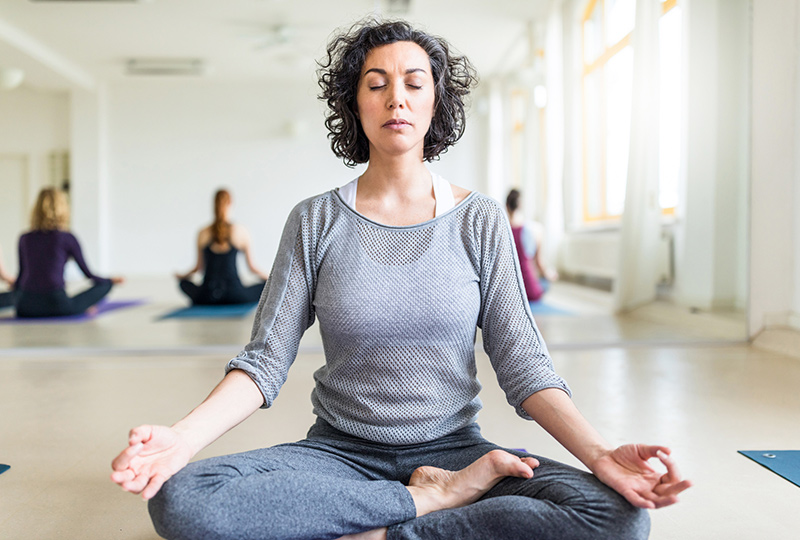Try these 7 yoga poses and breathing exercises to relieve tension and stiffness.
When life becomes a literal pain in the neck, yoga can help, and it’s a remedy doctors prefer to prescribe rather than medications. We checked in with Dr. Byron Fitzgerald Stephens II, at the Vanderbilt Spine Center to give us more information on how you can use yoga for neck pain.
“Modern technology — our cellphones, computers, tablets, etc. — results in many of us spending the majority of our day in excessive cervical flexion,” Stephens said. “This can significantly alter the biomechanics of our cervical spine and lead to significant pain and disability.”
Yoga increases the flexibility and strength in the cervical spine, so it can be done as a treatment and as a way to ward off future pain.
Stephens suggests physical therapy, yoga or a combination of the two whenever he sees a patient who has significant axial neck discomfort — either from muscular strain, mild disc degeneration or facet-mediated pain. “I have seen remarkable results and often complete resolution of the pain,” he said.
However, in cases where a patient is experiencing acute or severe cervical spasm or neck injury, Stephens recommends holding off on trying yoga until the body has time to heal and inflammation has decreased. “Once the acute healing phase is over, yoga can provide remarkable pain relief,” he said.
7 yoga poses for neck pain
Osher Center for Integrative Health suggests the following yoga poses for neck pain. The key is being gentle. The neck can be harmed with too much movement or with being too rigid in not moving, so focusing our attention more on breath and soft sound invite internal gentleness to the structures of the neck. Choose a comfortable, quiet environment and turn off your phone or any other devices that can make noise. Then, sit comfortably with your feet flat on the floor below your knees, or slightly in front of your body to support your spine. Check in with your body, breath and mind, then bring to mind the sound of gentle moving water. Now you’re ready to begin!
Pose 1:
- Place your hands on your belly. Feel the movement of your belly for several breaths.
- Gently accentuate exhalation — imagine your belly emptying for several breaths.
- Exhale with a soft, vibrating “hum” for several breaths.
- Continue this breathing activity throughout the following movements.
Pose 2:
4 to 6 times
- Breathe in: Hands resting on thighs, palms facing up.
- Breathe out: Palms facing down.
- Pause after exhale if easy and gentle.
Pose 3:
4 to 6 times
- Breathe out: Bring hand up to same shoulder.
- Pause after exhale.
- Breathe in: Relax hand, palm back down to thigh.
Pose 4:
4 to 6 times
- Breathe in: Palms face up, arms slightly wide.
- Breathe out: Bring hand to oppose shoulder, eyes follow hand.
- Pause after exhale.
- Breathe in: Hand comes back slightly wide, palms up, eyes follow hand.
- Breathe out: Hand rests on thigh, palms down.
- Pause after exhale.
Pose 5:
4 to 6 times
- Breathe out: Hands slide toward knees, arms long and hanging, body follows forward.
- Breathe in: Stay at ease.
- Breathe out: Hands slide back toward hips, body returns to sit tall.
- Breathe in: Stay at ease.
Breathing exercise 1:
12 times
- Breathe in: Softly through pursed lips or curled tongue, gently raise chin to level.
- Breathe out: Softly through the nose with lips closed.
- Pause after exhale: Chin comes slightly down toward chest.
Breathing exercise 2:
2 minutes
- Breathe in: Feel water wash over and through your body and mind.
- Breathe out: Allow water to wash away anything not needed.

Gentle movement
To learn how to do these poses safely and correctly and to develop a consistent yoga practice, consider taking a class at Vanderbilt’s Osher Center for Integrative Health.

